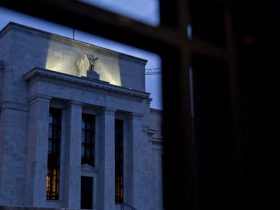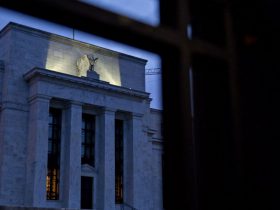Shopper spending is part of the explanation why Fannie Mae flipped its forecast to development, however at a slower tempo than regular, from a recession, its economists defined in a gathering with Nationwide Mortgage Information.
The January outlook now requires 1.1% gross home product development, slightly than a 0.4% decline in 2024. That’s as a result of this month’s spending information “was fairly gangbusters on the patron aspect,” mentioned Doug Duncan, the government-sponsored enterprise’s chief economist.
Nonetheless, “there’s nonetheless a bunch of different indicators that we’re watching that do recommend a recession. The yield curve’s nonetheless inverted [but] it is getting nearer to flipping,” he identified.
The Fannie Mae economists had been predicting the U.S. was heading for a recession with the April 2022 forecast, nevertheless it saved altering the timing of when it could begin.
There have been 21 consecutive months of declines within the main financial indicators, such because the financial aggregates which have gone unfavorable.
However the U.S. economic system can also be benefiting nonetheless from the Chips Act and the Inflation Discount Act working via the system, “and the congressional estimates turned out to be massively low relative to the precise influence of these from an combination monetary perspective. So that they’ve supplied some assist on the macro aspect as nicely,” Duncan mentioned.
So in doing a plot of the GDP numbers, “what you will note is the downturn simply is not as deep as was to get a light recession,” he mentioned.
The Federal Reserve’s pivot, ratified by the bond and inventory markets, additionally performed a component, mentioned Mark Palim, Fannie Mae’s deputy chief economist.
“On steadiness, the economic system’s not going to slide into recession,” Palim mentioned.
Geopolitical dangers can have an effect on the forecast, and proper now three sizzling spots exist: between Russia and Ukraine, within the Center East and between China and Taiwan, Duncan famous.
However Protection Division expenditures might be a constructive for GDP development, he mentioned.
In the meantime, the spreads between the 10-year Treasury yield and charges on the 30-year mounted mortgage ought to slim within the subsequent two years, Duncan mentioned.
Optimum Blue’s information put the unfold at 258 foundation factors on Jan. 19, down 20 foundation factors over a four-week interval. However it’s nonetheless wider than the norm, someplace between 150 and 200 foundation factors.
Fannie Mae introduced its projections for the 30-year FRM to five.8% for the fourth quarter and 5.5% for a similar interval subsequent yr. Its common for the 10-year each years is 3.8%.
So a driver of the speed decline will likely be unfold compression, Palim mentioned.














Leave a Reply